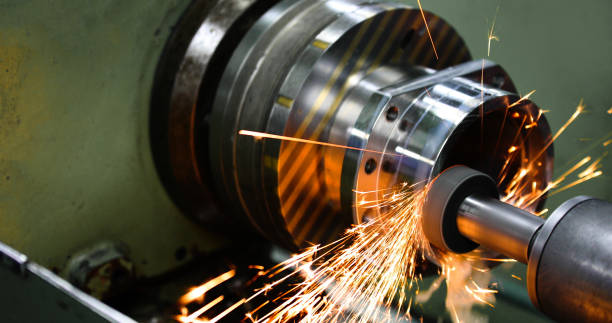Grinding is a fundamental process that has been used for centuries to shape, smooth, and polish various materials. From ancient civilizations to modern industries, grinding has played a crucial role in the development and manufacturing of numerous products. Despite its widespread application, many people are unfamiliar with the concept of grinding and its significance in different fields. In this article, we will explore the definition, benefits, and process of grinding, providing a comprehensive guide for beginners.
Definition of Grinding
Grinding is a mechanical process that involves the use of an abrasive material to remove unwanted substances, smooth out surfaces, or sharpen cutting tools. The abrasive material, which can be in the form of a what is grinding wheel, sandpaper, or abrasive powder, is applied to the workpiece with a certain amount of pressure and speed. This results in the removal of material, leaving a smooth and polished surface. Grinding can be performed using various techniques, including hand grinding, machine grinding, and automated grinding.

Benefits of Grinding
Grinding offers several benefits, including improved surface finish, increased precision, reduced material waste, and improved safety. Grinding can produce a high-quality surface finish, which is essential for many applications, such as aerospace and automotive. Grinding can also produce precision parts with tight tolerances, which is essential for many applications, such as manufacturing and construction. Additionally, grinding can reduce material waste by removing only the necessary amount of material. Finally, grinding can improve safety by removing sharp edges and burrs, which can cause injuries.
How Grinding is Done
The grinding process involves several key steps, including preparation, grinding, and finishing. Preparation involves cleaning and preparing the workpiece for grinding, which includes removing any debris, oil, or other substances that may interfere with the grinding process. Grinding involves applying the abrasive material to the workpiece and removing material, resulting in a smooth and polished surface. Finishing involves inspecting the final product and making any necessary adjustments to ensure that it meets the required specifications.
Types of Grinding
There are several types of grinding, each with its unique characteristics and applications. Surface grinding, for instance, involves removing material from a flat surface using a rotating grinding wheel. This type of grinding is commonly used to smooth out metal surfaces, remove rust, and prepare surfaces for painting or coating. Cylindrical grinding, on the other hand, involves removing material from a cylindrical surface using a rotating grinding wheel. This type of grinding is commonly used to manufacture precision parts, such as engine components and hydraulic cylinders.
Grinding Tools and Equipment
Grinding requires specialized tools and equipment, including grinding wheels, grinding machines, sandpaper, and abrasive powders. Grinding wheels are made from abrasive materials, such as silicon carbide or aluminum oxide, and are used to remove material from a workpiece. Grinding machines are used to perform grinding operations and can be manual or automated. Sandpaper is a type of abrasive material used to remove material from a workpiece by hand. Abrasive powders are used to remove material from a workpiece using a grinding wheel or sandpaper.

Tips for Beginners
For beginners, it is essential to follow proper safety protocols when grinding, including wearing protective gear and ensuring proper ventilation. It is also important to choose the right grinding tool or equipment for the job, as well as to follow proper grinding techniques. Additionally, beginners should start with simple grinding projects and gradually move on to more complex ones as they gain experience and confidence.
Conclusion
Grinding is a fundamental process that has been used for centuries to shape, smooth, and polish various materials. By understanding the definition, benefits, and process of grinding, beginners can appreciate the importance of this process in producing high-quality products. Whether you’re a beginner or an experienced professional, grinding is an essential process that requires skill, patience, and dedication. With the right tools and equipment, grinding can be a safe and effective way to achieve high-quality results in various industries.